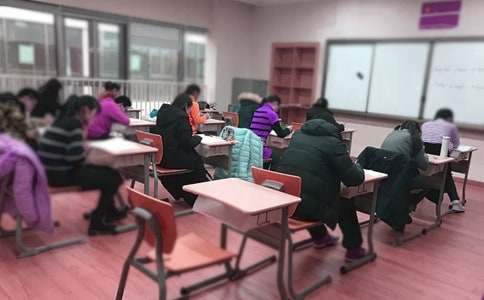- œύξPΆΤΥ]
ΩΦ‘΅»Ϊ’φν}νA€y
?The word laser was coined as an acronym for Light Amplification by the Stimulated

ΓΓΓΓEmission of Radiation. Ordinary light, from the Sun or a light bulb, is emitted
ΓΓΓΓspontaneously, when atoms or molecules get rid of excess energy by themselves, without
ΓΓΓΓany outside intervention . Stimulated emission is different because it occurs when an
ΓΓΓΓatom or molecule holding onto excess energy has been stimulated to emit it as light.
ΓΓΓΓ?? Albert Einstein was the first to suggest the existence of stimulated emission in a
ΓΓΓΓpaper published in 1917. However , for many years physicists thought that atoms and
ΓΓΓΓmolecules always were much more likely to emit light spontaneously and that stimulated
ΓΓΓΓemission thus always would be much weaker. It was not until after the Second World
ΓΓΓΓWar that physicists began trying to make stimulated emission dominate. They sought
ΓΓΓΓways by which one atom or molecule could stimulate many other to emit light ,
ΓΓΓΓamplifying it to much higher powers.
ΓΓΓΓ?? The first to succeed was Charles H.Townes, then at Colombia University in New
ΓΓΓΓYork . Instead of working with light , however, he worked with microwaves, which have
ΓΓΓΓa much longer wavelength, and built a device he called a "maser" for Microwave
ΓΓΓΓAmplification by the Stimulated Emission of Radiation. Although he thought of the
ΓΓΓΓkey idea in 1951, the first maser was not completed until a couple of years later. Before
ΓΓΓΓlong, many other physicists were building masers and trying to discover how to produce
ΓΓΓΓstimulated emission at even shorter wavelength.
ΓΓΓΓ?? The key concepts emerged about 1957. Townes and Arthur Schawlow, then at Bell
ΓΓΓΓTelephone Laboratories, wrote a long paper outlining the conditions needed to amplify
ΓΓΓΓstimulated emission of visible light waves. At about the same time, similar ideas
ΓΓΓΓcrystallized in the mind of Gordon Gould, then a 37- year-old graduate student at
ΓΓΓΓColumbia, who wrote them down in a series of notebooks. Townes and Schawlow
ΓΓΓΓpublished their ideas in a scientific journal, Physical Review Letter, but Gould filed a
ΓΓΓΓpatent application. Three decades later, people still argue about who deserves the credit
ΓΓΓΓfor the concept of the laser.
ΓΓΓΓ1. The word "coin" in line 1 could be replaced by
ΓΓΓΓ(A) created
ΓΓΓΓ(B) mentioned
ΓΓΓΓ(C) understood
ΓΓΓΓ(D) discovered
ΓΓΓΓ2. The word "intervention" in line 4 can best be replaced by
ΓΓΓΓ(A) need
ΓΓΓΓ(B) device
ΓΓΓΓ(C) influence
ΓΓΓΓ(D) source
ΓΓΓΓ3. The word "it" in line 5 refers to
ΓΓΓΓ(A) light bulb
ΓΓΓΓ(B) energy
ΓΓΓΓ(C) molecule
ΓΓΓΓ(D) atom
ΓΓΓΓ4. Which of the following statements best describes a laser?
ΓΓΓΓ(A) A device for stimulating atoms and molecules to emit light
ΓΓΓΓ(B) An atom in a high-energy state
ΓΓΓΓ(C) A technique for destroying atoms or molecules
ΓΓΓΓ(D) An instrument for measuring light waves
ΓΓΓΓ5. Why was Towne’s early work with stimulated emission done with microwaves?
ΓΓΓΓ(A) He was not concerned with light amplification
ΓΓΓΓ(B) It was easier to work with longer wavelengths.
ΓΓΓΓ(C) His partner Schawlow had already begun work on the laser.
ΓΓΓΓ(D) The laser had already been developed
ΓΨΩΦ‘΅»Ϊ’φν}νA€yΓΩœύξPΈΡ’¬ΘΚ
ΗΏΦâΩΎΉgΖ≠ΉgΌYΗώΩΦ‘΅»Ϊ’φνA€yν}08-12
ΗΏΦâΩΎΉgΖ≠ΉgΌYΗώΩΦ‘΅»Ϊ’φνA€y08-12
2016Ρξ¬öΖQ”Δ’ZάμΙΛνêAΦâ»Ϊ’φνA€yν}06-18
2017ΆβΌQ(m®Λo)ΗζÜΈÜTΩΦ‘΅νA€yν}08-13
2016¬öΖQ”Δ’ZάμΙΛνêbΦâ»Ϊ’φνA€yν}Θ®Κ§¥πΑΗΘ©08-30
2017ΡξΗζÜΈÜTΩΦ‘΅νA€yν}ΦΑ¥πΑΗ06-17
2017ΆβΌQ(m®Λo)ΗζÜΈÜTΩΦ‘΅νA€yν}ΦΑ¥πΑΗ06-20